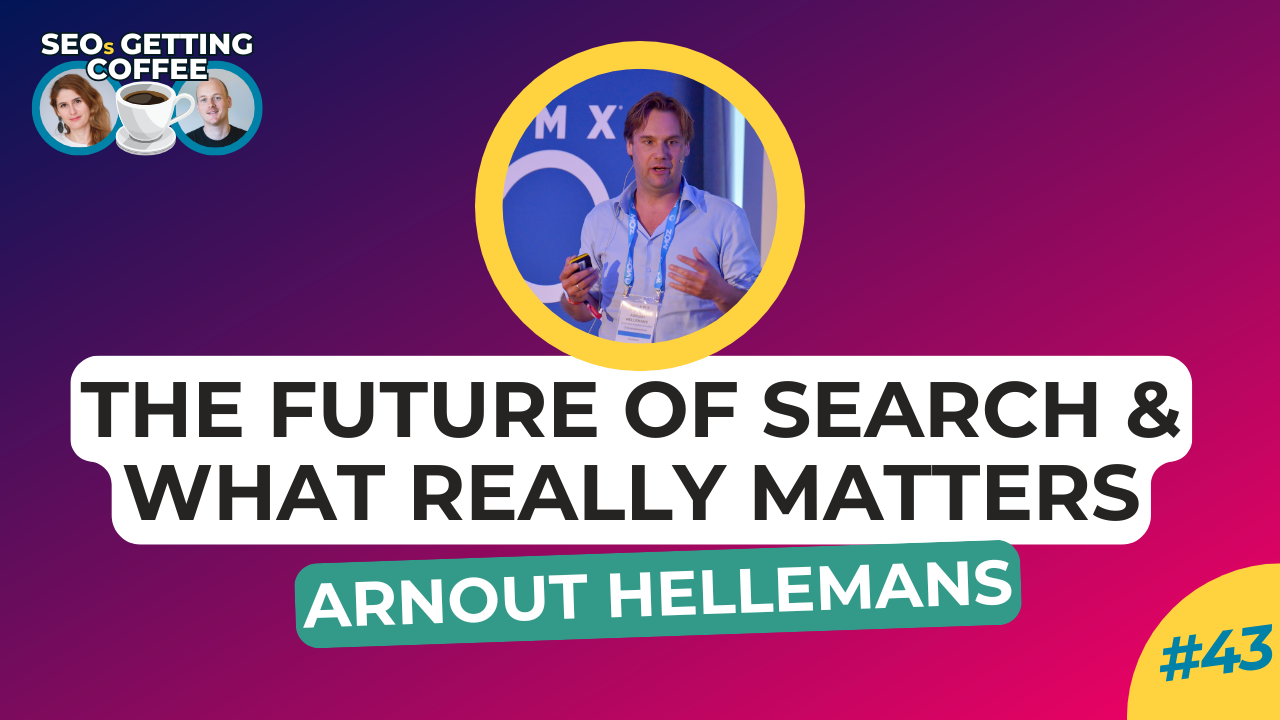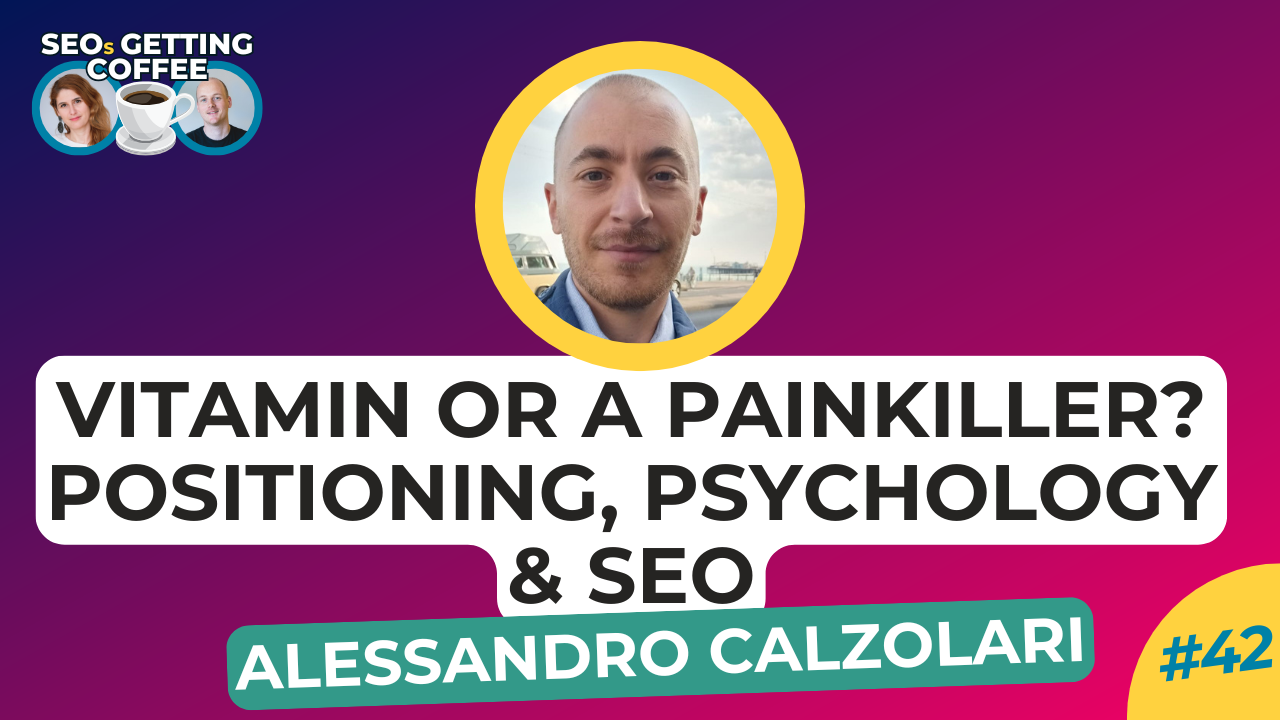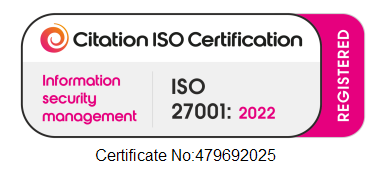AI in SEO: Case Study and How to Guide
Case Study: AI-Powered SEO for Qlic IT
- July 3, 2024

Everyone is talking about AI, and many are using it in SEO with varying degrees of success.
Read on to find out how we successfully integrated AI into a content workflow with Qlic IT.
Understand what the role of AI actually is in SEO and get inspired with advanced and basic tools and examples.
Spoiler alert: AI won’t do your SEO for you. But it can help.
Case Study: AI-Powered SEO for Qlic IT
Summary
Our SEO work with Qlic IT achieved excellent results over six months, significantly enhancing lead generation and brand authority in the charity IT sector. This case study details how we used AI to collaborate with Qlic IT’s niche website, focusing on generating high-quality leads through targeted SEO strategies.
Objective
The primary objective of our AI-driven SEO campaign for Qlic IT was to drive organic traffic and generate high-quality leads within the charity IT sector. We aimed to improve Qlic IT’s corporate communications and establish the company as a trusted authority in its niche market. Our 6-month objectives included:
- Increase organic traffic by 50%
- Increase conversions by 20%
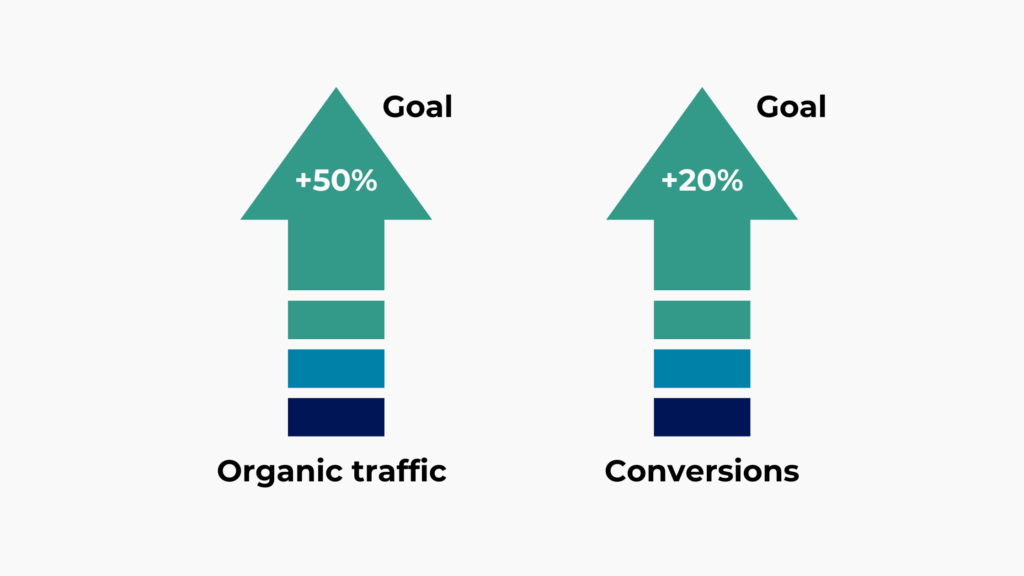
Qlic IT has a small marketing team. In fact at the time, “the team” was one lovely Marketing Coordinator. To put it simply, the capacity to produce high-quality content was low and the budget was tight. As with anyone working in SEO these days, the solution was testing using AI to optimise the process as much as possible to reach our set targets.
Research and Planning
Given Qlic IT’s unique position in the charity IT sector and their small marketing team thorough research and meticulous planning were essential. With a budget of £1650 per month, we employed AI tools to conduct market research, competitor analysis, and audience behaviour studies. This AI-driven research provided valuable insights that shaped our tailored SEO campaign, focusing on quality over quantity of traffic.

Creativity and Innovation
At the core of our campaign was the innovative use of AI. We integrated AI ethically and effectively into our content creation process, addressing the challenge of Qlic’s small team by enhancing efficiency. AI tools assisted with research and content delivery, balancing automation with human expertise to ensure high-quality output.
Our strategy targeted highly relevant search terms to attract quality traffic regardless of their search volume. We developed a unique content workflow that combined AI assistance with human oversight. AI was fed detailed SEO briefs and expertise from Qlic webinars and sales materials, ensuring all content met high standards of Experience, Expertise, Authoritativeness, and Trustworthiness (EEAT). The Vixen team then reviewed and enriched the content further.
Strategic Use of AI in SEO
We were mindful of the risks associated with AI-generated content. Google does not explicitly state whether AI content will be re-ranked, but trends indicate that this is already happening to some companies. Our strategic approach ensured that AI was used to complement and enhance human expertise rather than replace it, mitigating any potential risks and maintaining high standards of quality.
Strategy and Implementation
Our multifaceted strategy included:
- Topic, Subtopic, and Keyword Selection: Utilising AI and manual research, we identified and prioritised topics and keywords based on market opportunities, intent, persona, and keyword density.
- Content Creation and Optimisation: We developed a content calendar aligned with our research. AI-assisted tools streamlined content creation, which was then reviewed by human experts to ensure quality and alignment with search intent.
- Ongoing Monitoring and Adjustment: Continuous monitoring allowed us to adjust strategies based on data insights, ensuring sustained growth and adaptability to changing algorithms.

Results
Over the last six months, our AI-driven campaign achieved and surpassed its targets:
✅ We increased organic traffic by 74% – above the 50% target.

✅ We increased conversions by 39.5% – above the 20% target.

Consistently publishing valuable, AI-supported content established Qlic IT as a thought leader in the charity IT sector, enhancing corporate communications and reinforcing brand authority. This success led to increased client satisfaction, an expanded budget, and additional project engagements. The ongoing website redevelopment aims to further enhance user experience and maintain high search rankings. Furthermore, due to the revenue increase brought by our AI-driven approach, Qlic has been able to hire a second person in their marketing team.

Our continuous optimisation and strategic adjustments ensured sustained improvements, keeping Qlic IT’s online presence strong with high-quality leads and increased market visibility. This AI-enhanced SEO campaign exemplifies the power of AI in achieving remarkable results.
Ready to harness the power of AI to boost your SEO?
Increase your organic traffic
Talk to us today to see how we can help you get more from your SEO.

Understanding the Role of AI in SEO
AI can and does play a vital role in search engine optimisation. But this is not new. What’s new is the new avenues platforms such as ChatGPT and Gemini have opened up for SEOs and Digital Marketers looking to use AI.
The first step to understanding the role AI plays in SEO is by busting the biggest myth: what we are talking about here with all of this is not actual AI. AI is a wide field, and true AI has not yet been developed. What today’s models belong to is Narrow Intelligence. And, when it comes to SEO the terms to actually understand are: machine learning (ML), large language models (LLM) and natural language processing (NLP).
As the super useful visual depicts, AI is the broader concept, while machine learning is a subset of AI.
Machine learning, as the name itself suggests, is the process by which machines (computers) learn to become more efficient and effective at performing tasks. ML algorithms are fed large amounts of data from which they can learn. This is where NLP comes in.
NLP makes it possible for human language to be understood by computers. NLP is part of the pipeline that allows computers to process, understand and generate human language.
LLMs are machine learning models that are fed a massive amount of data, which they use to understand human language. Some LLMs, like Gemini and ChatGPT use this data to also produce text that sounds like it’s been written by a human – also known as Natural language generation (NLG).
None of the three (or 4 terms if you include NLG) are new. They have been around for a while. In search specifically, AI has held a big role for ages.
Here are just a few examples:
2015 – RankBrain
RankBrain is part of Google’s core algorithm and utilises machine learning to understand search queries and deliver more relevant results.
2017 – Transformers
This is where the fun really started and paved the way for NLG and search as we know it. It’s a very complex model to understand, but the important thing to note is that the model is a BIG part of how search works today.
2018/2019 BERT
BERT (Bidirectional Encoder Representations from Transformers) – notice the word transformers here? Well, yes, this is the continuation of the research in algo form. BERT significantly improves the understanding of search queries – it understands intent.
2020 SMITH
SMITH (Siamese Multi-depth Transformer-based Hierarchical) – a model designed to better understand long-form documents. We don’t have confirmation that this is currently used in search.
2021/2022 MUM
MUM (Multitask Unified Model) – MUM can understand and generate language across 75 languages and can perform multiple tasks simultaneously, such as understanding a query and generating a response. Again it’s not confirmed that this is currently used and has recently been overshadowed by the next one in this list.
2022 – 2024 AI Overviews
And here we are today with AIO, making everyone’s lives difficult, at least in the US. Here’s a bit of humble pie from Google as well! AI Overviews are essentially responses to queries that Gemini now gives directly into the search results in the US.
It is evident that Google has been using AI for a while now to serve search results. Understanding how these systems work will also help you use AI to enhance your SEO.
Using AI in SEO
AI in SEO involves leveraging machine learning algorithms, natural language processing, and data analysis to optimise websites and content. AI tools can automate repetitive tasks, provide deep insights into data, and improve the overall strategy by predicting trends and user behaviour.
Using AI in SEO has been particularly popular in on-page SEO and content, with AI articles popping up left, right and centre. In fact, even this piece has elements in it. A recent study by Graphite is also telling. It shows how marketers are using AI, but the approach is considered. They found that 88% of results in Google have little to no AI content, only 12% have high amounts of AI content, and only 3% are fully AI content.
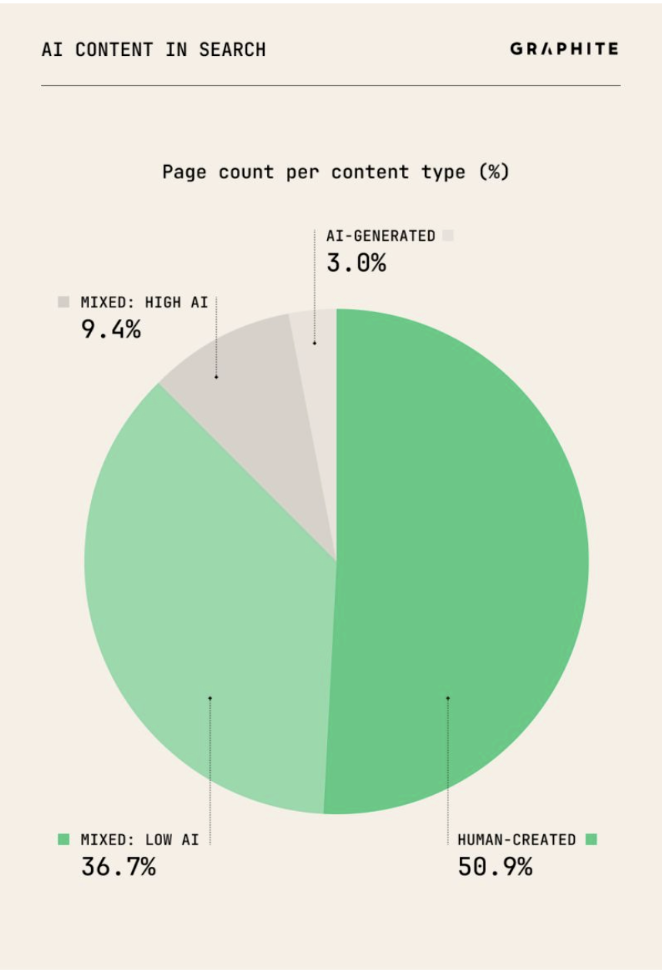
But it’s not only about content. It can be used to support and enhance multiple tasks. Specifically, you can use AI in SEO for:
- Research and planning
- On-page SEO, including keyword research (with caveats!)
- Off-page SEO
- Technical SEO
- Migration SEO
- International SEO
- Monitoring and reporting
Before we dive in, you likely heard everyone mentioning prompts and how it’s all about how you structure your prompt. There are various resources and courses out there that will help you be a better prompt engineer. Some are pants, others, like the Generative AI: Prompt Engineering Basics, the Gemini prompt guide and Aleyda’s Prompt Generator, are quite good.
But while prompts make a difference, remember, LLMs are not actually AI. They won’t give you everything you need to rank better. For one, they won’t be able to add the first E into the EEAT framework which is super useful for creating top content. Experience is not something one can fake (at least not for long!).
Research and Planning
LLM, like ChatGPT, are trained on a lot of data. They already know your audience in a way. Using AI for market research is a great way to start your SEO audience research. This doesn’t mean you should rely only on AI to do your market research. It’s a starting point. Instead, use AI to:
Develop market research questions to use with real customers, your sales team and other stakeholders
Brainstorm workshops you can run with teams to do user journeys and personas
Help you understand user intent and search behaviour patterns
Provide you with trend data for your target industry
One thing to note, though, is do not take anything at face value. AI is there to help, not do for you. For example, if you use it for search intent, make sure that you check what’s actually ranking! There might be a discrepancy between what a chatbot tells you and what, in reality, is the search intent according to Google.
An interesting use case for the planning is also reframing these AI tools as not only helpful to give you answers but also helpful as a data source. Let’s take for example customer service chatbots that are widely used. As ex-Mozer Kavi Kardos recently said on our SEOs Getting Coffee podcast: ‘Those are a ready-made repository you can mine!’.
On-page SEO
From keyword research (sometimes wrongly!) to optimising on-page elements and content creation, AI is used left, right and centre. Here are a few of the usual use cases for AI and on-page SEO:
- Supporting keyword research
- Developing content briefs or writing content
- Optimising on-page elements such as meta descriptions and headings
- Supporting internal linking efforts
One area in which AI has alarmingly been used more and more is for keyword analysis. While it can be useful to get you started and brainstorming, you should not use it to fully automate your keyword research. For one, the volumes AI will give you are usually very different from what an SEO tool such as SemRush or Ahref will show. They are essentially a guess!
Similarly, using ChatGPT should come with a warning for clustering keywords. While chatbots are good at grouping keywords, in SEO keywords should be grouped based on a semantic relationship and proximity, for which you need to take into consideration the actual SERP overlap.
While asking ChatGPT to suggest internal links won’t work, there are AI-powered tools out there that do a decent job. One example is Link Whisper, a smart internal linking tool that auto-suggests link opportunities from within your CMS. Again, do not just auto-apply!
Off-page SEO
AI can also help you streamline elements of your Off-page SEO. For example, it can support the link-building process by identifying potential link opportunities and automating outreach. Integrating AI into your outreach will speed up the process substantially, but again, like with any content creation, you need to make sure you don’t just copy-paste.
There are AI-powered link building tools that specifically focus on automating and streamlining the process as well. A few examples here include:
- Hunter.io – finds email addresses for outreach
- LinkHunter – lets you automate outreach and find opportunities
- BuzzStream – another all-rounder in link building
While those tools are certainly helpful, in reality, you also need to consider that true off-page link building cannot be fully automated. Just think about the most useful forms of off-page SEO, brand building and organic link building. Those strategies are much more complex, and an LLM, while it can help you brainstorm, won’t do them for you!
Technical SEO
Using AI for technical SEO is a no-brainer. And, tests show that this is where LLMs can really shine. We’ve used AI to do a number of technical SEO elements, to name a few:
- Creation of schema markup
- Validating and suggesting robot.txt rules
- Checking and generating XML sitemaps
- Brainstorming possible technical issues (such as core website vitals – let’s face it, Page Speed test is always a bit vague!)
- Providing deeper understanding of technical elements such as website architecture
There are even some excellent custom ChatGPTs to help here, for example, FAQ Schema Markup Generator by Brian Wylie and Scraper by hqdata.com . Some of the best technical tools have also started integrating AI into the mix, for example, Screaming Frog with their Crawling with ChatGPT update.
Migration SEO
We all know what a pain a migration can be! All that work you have been doing to optimise your website can go down the drain if you migrate your website and don’t pay attention to migration best practices. This is where having AI support comes in handy. A few tasks here include:
- Creating .htaccess rewrite rules for redirects
- Ensuring that you don’t migrate technical issues you already have
- Redirect mapping
Screaming Frog is also great here with the ChatGPT integration, which can, for example, bulk write all those missing alt texts you likely have and don’t want to migrate! For redirect mapping, you can use a combination of Screaming Frog, Google Colab and a Python script by Daniel Emery.
International SEO
Another area that can often prove to be problematic, even for seasoned SEOs, is international SEO. Mistakes with implementation range from severe (such as auto-redirecting to a particular version using IP) to mild (not changing all external links to appropriate country-specific sources).
Using AI to support international SEO is a great way to troubleshoot some of the issues that might arise and help you make the process more effective. Here are a few examples:
- Translation – but with care!
- Generating and validating Hreflang tags
- Multilingual chatbots on the website
- Generating image alt text in multiple languages
Besides using ChatGPT to help this process, there are tools out there that specifically target international SEO and have AI capabilities. A few examples include Unbabel, AI translations but with an easy way to have human oversight, Cloudinary – a tool that can generate image alt texts in different languages and our very own Hreflang Pro.
Monitoring and reporting
One of the most exciting areas where AI has been explored to add efficiencies is in reporting and monitoring. We all know that data insights are invaluable in SEO, yet managing datasets and getting reports to work can also be a tedious and infuriating job. The amount of times you get data that needs a ton of cleaning before it can actually be used is staggering! Not to mention that costs for a typical SEO tech stack are continuously rising while budgets are being cut.
AI can and is being used in SEO monitoring and reporting in multiple ways. A few examples here are:
- Automating on-page content monitoring
- Helping develop Excel formulas and troubleshooting
- Providing a cost-effective way to report
- Data education – helping you understand how to analyse datasets
There are already plenty of tools and examples to help you do this successfully. Here are a few favourites, beyond the usual suspects, such as SemRush, Ahref and other SEO tools for digital marketing, all of which have some kind of AI foundation.
The awesome Caitlin Hathaway explains how AI was used to empower the editorial and the SEO team at MVF to identify trends in content optimisation issues. And, once you know the issues you can work better to fix them!
Seer Interactive has an interesting template to help organisations use ChatGPT to report on brand mentions. Not tested yet though!
As SEOs we are all familiar (or should be!) with Looker Studio. What is less known is Looker Studios’ sister product named simply, Looker. he Google roadmap involves merging the two in the near future. Looker is far more technical so if you are not into data science, you can skip this bit.
The two products are similar but different. Looker Studio is a dashboarding system that allows you to create reports using things like connectors, for example. It works well on smaller datasets, but as soon as you are trying to plug in a large dataset, it can be terribly slow. Unless you hook it up to something like BigQuery (a data warehouse). Looker is much more powerful and works best on large datasets. While you can use it to do reports, the real value is the power of Looker to bring your data closer to business insights. Here’s a great blog on the topic by Cobry explaining elements such as the semantic data layer and drill downs, which are possible in Looker. Looker already has some impressive AI additions in preview. For example, you can integrate Looker with DuetAI and use it, among other things, as your personal reporting assistant. Another example is the Vertex AI and Looker Integration, which already has a free GitHub extension. You can use it to explore your data using a chatbot-like interface and natural language.
Final thoughts
A future where AI takes over SEO jobs is very unlikely. And, as some of the examples here show, only a small number of SEOs and companies are in a position to truly take advantage of the AI capabilities. But this doesn’t mean that companies shouldn’t test and explore how to use AI in SEO.
Hopefully, the examples here and the case study of how we used AI with Qlic will inspire companies to play around. We’ve given a mix of advanced and basic ideas you could try. Happy testing!



